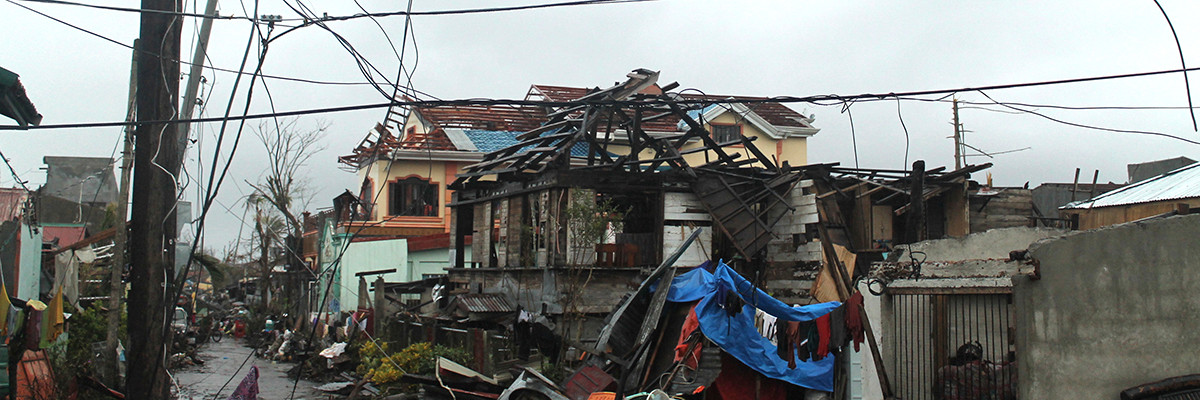
Damage to buildings in Tacloban City, the Philippines, following Typhoon Haiyan.
Authors
-
Cammie Erickson
Former Manager, BSR
In the middle of the COP20 climate talks, more than one million people were forced to flee Typhoon Hagupit in the Philippines. And headlines in the United States this year have focused on increasingly high temperatures, heavy rains, severe floods, and droughts across much of the country. There is increasing evidence that climate impacts are already upon us, but much of the COP20 negotiations have centered on emissions reductions.
Although “avoiding the unmanageable” impacts of climate change is essential, we see evidence all around us that ambitious action must be taken to “manage the unavoidable.” There is an urgent imperative for the private sector and government to ensure that effective and appropriate adaptation measures are included in these climate negotiations.
Yesterday’s Caring for Climate Business Forum and last weekend’s Development and Climate Days focused heavily on advancing the business case for climate resilience and radical adaptation, among other topics. Discussions revealed that while some companies have already begun to invest in adaptation efforts, much more needs to be done to build resilience along operations and supply chains.
Key opportunities for business to build adaptive capacity include:
- Understanding and mapping material risk: Some estimates put the cumulative, global cost of climate change impacts as high as US$4 trillion by 2030 if we continue on our current greenhouse gas emissions pathway. Companies must understand the climate risks they face and build strategies to help them address those risks in the countries where they operate and source. Risks include disrupted supply chains, reduced availability of scarce natural resources, damage to vital infrastructure and utilities, disrupted transport routes, heightened price and market volatility, and unpredictable impacts on the workforce and consumers.
- Building adaptive capacity through social development interventions: Companies can invest in development interventions for communities most affected by climate impacts, such as healthcare, education, gender empowerment, biodiversity and ecosystem services, and capacity building of local organizations. In addition, companies can develop products and services that help companies in other industries address climate risk. In the financial services industry, companies like Sompo are developing typhoon insurance products for agricultural customers in the Philippines.
- Using innovative financing to build climate resilience: Companies can build adaptive capacity in their operations and supply chains through financial interventions. In the aftermath of Typhoon Haiyan in 2013, Coca-Cola provided US$2.5 million in cash and in-kind contributions to assist small businesses with reconstruction, which helped them to reopen rapidly. And IKEA provided US$5.6 million to support medical care, clean water, shelter, food, and hygiene stations to children and families in rural areas. In the aftermath of Superstorm Sandy, Verizon climate-proofed its landline and wireless infrastructure in New York and New Jersey by opting to install a wireless Voice Link system, rather than replacing its destroyed copper wiring system.
How does all this link with the negotiations in Lima? Currently, governments are preparing National Adaptation Plans (NAPs) to reduce climate risk and vulnerability. Negotiators in Lima are discussing ways to integrate broader national development goals into these plans. The fact that the private sector is largely absent from these discussions is a significant missed opportunity. Business has a largely untapped ability around products and services innovation, access to resources including finance, protection of natural resources, and the capacity to build human capital, which are all vital to building resilience in the face of climate change. It’s time for the process surrounding COP to unleash that ability.
In January 2015, BSR will launch the Regional Adaptation Initiative, a collaboration to identify and address areas of shared climate risk in targeted regions throughout Asia and the United States. We will focus initially on helping companies understand climate risk and develop solutions that address sensitivity to risk and build adaptive capacity.
Let’s talk about how BSR can help you to transform your business and achieve your sustainability goals.